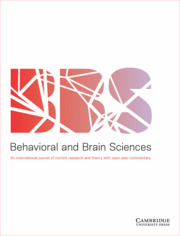Article contents
Further explorations of the empirical and theoretical aspects of the emulation theory
Published online by Cambridge University Press: 01 June 2004
Abstract:
The emulation theory of representation articulated in the target article is further explained and explored in this response to commentaries. Major topics include: the irrelevance of equilibrium-point and related models of motor control to the theory; clarification of the particular sense of “representation” which the emulation theory of representation is an account of; the relation between the emulation framework and Kalman filtering; and addressing the empirical data considered to be in conflict with the emulation theory. In addition, I discuss the further empirical support for the emulation theory provided by some commentators, as well as a number of suggested theoretical applications.
Information
- Type
- Author's Response
- Information
- Copyright
- Copyright © Cambridge University Press 2004
References
- 7
- Cited by

